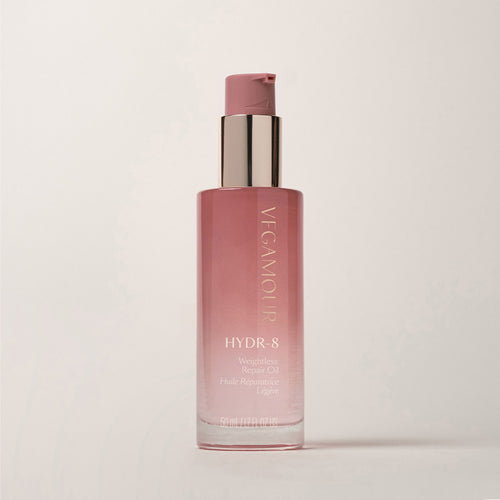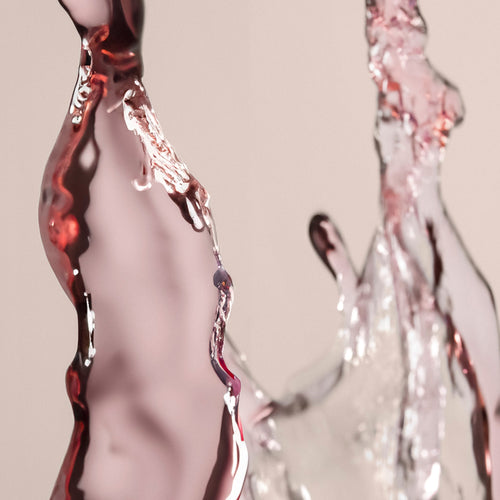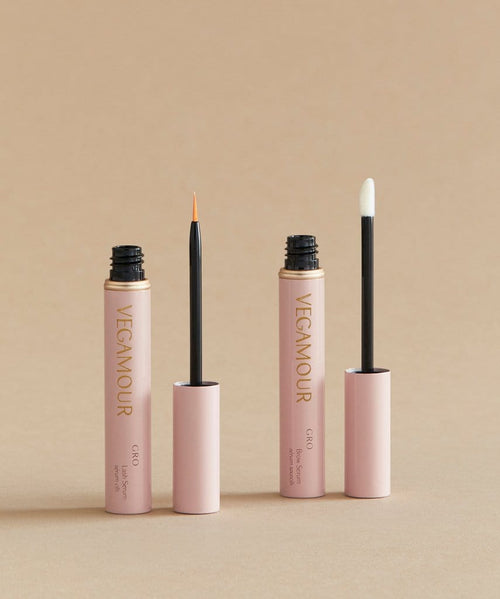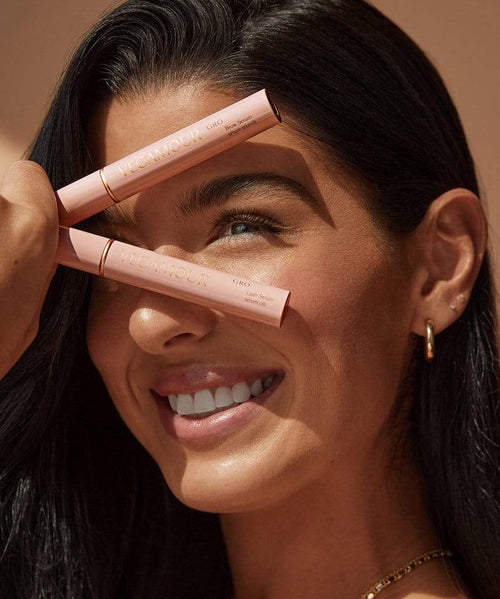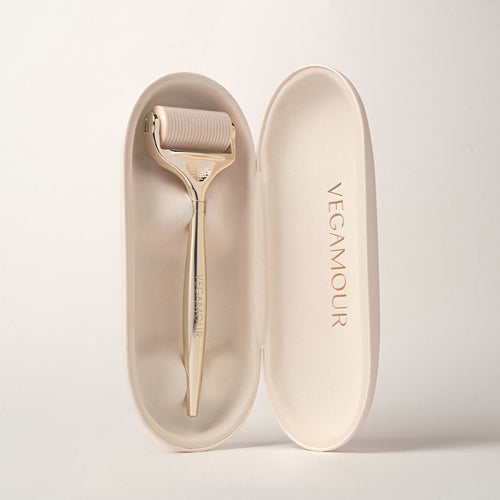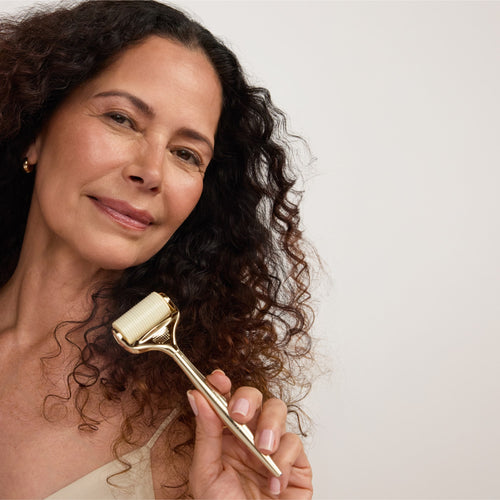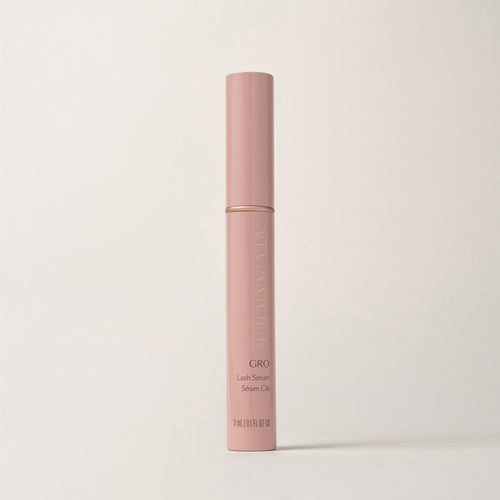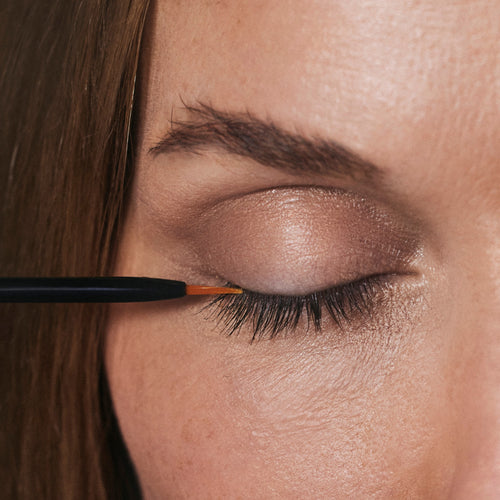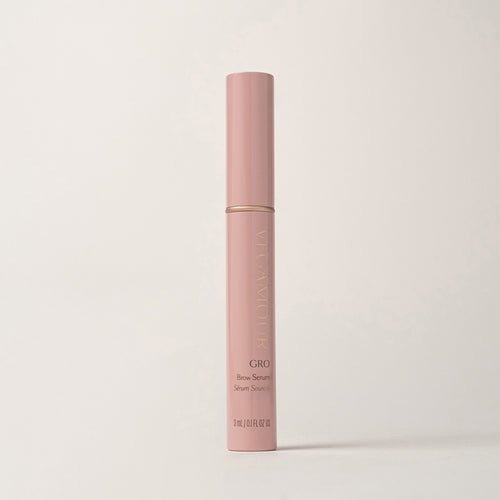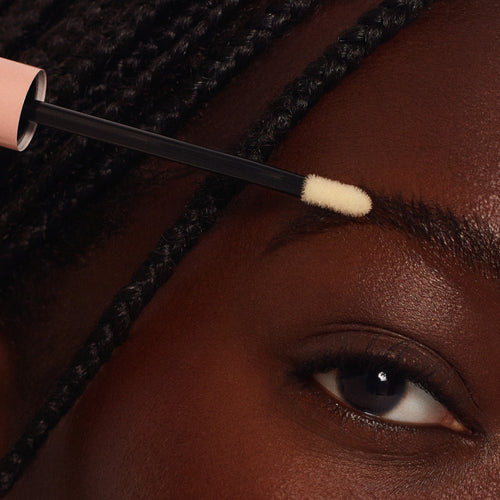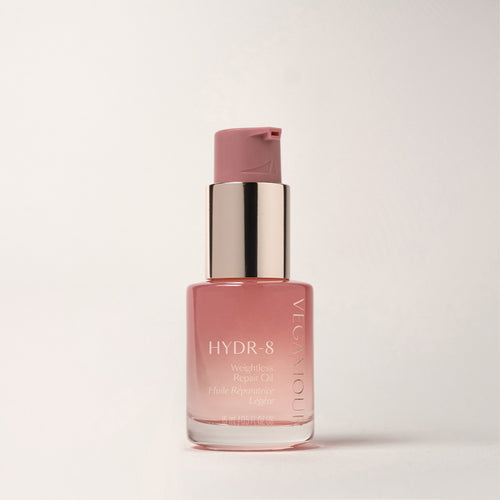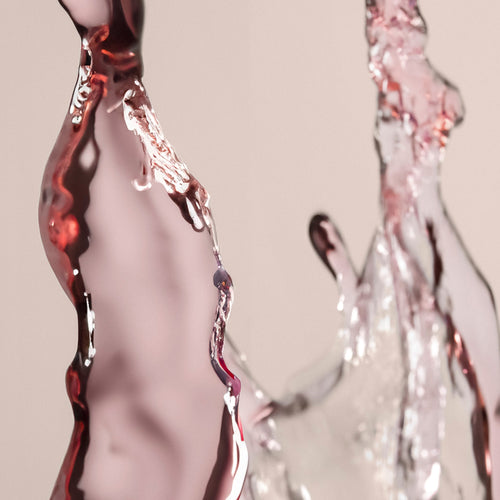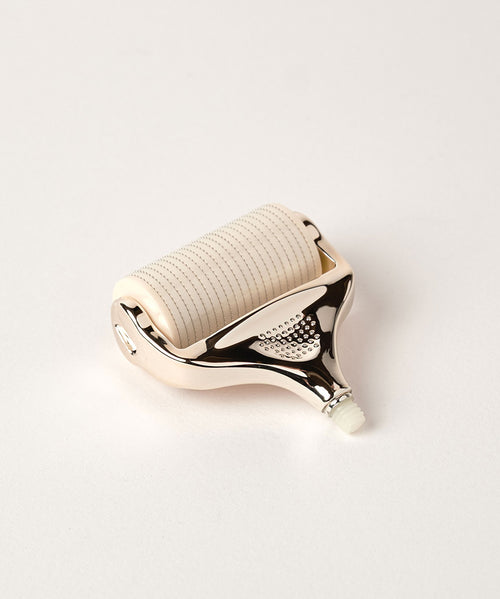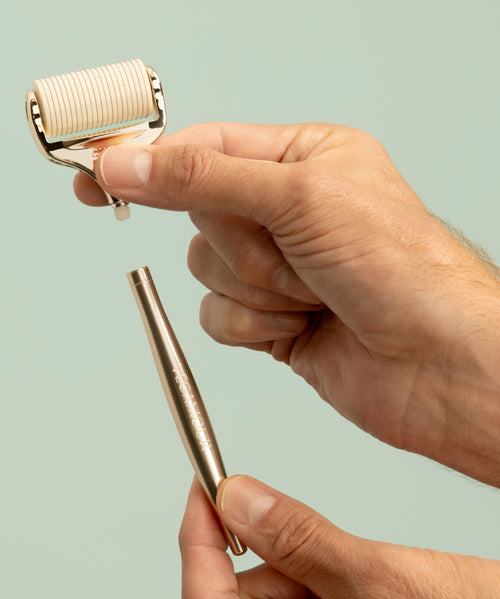You’ve been pulling your hair back to rock your favorite hairstyle for as long as you can remember. It’s your signature style. That repeated move of pulling your hair tight and away from your face has changed your entire look. Now your hair is thinning in the front and on the sides, and you don’t know what to do. It's possible you have traction alopecia.
If you're experiencing hair thinning do to repeated stress to your hair and scalp, the first thing you need to do is loosen up your hairstyle. Next, let's learn more about traction alopecia, how to tackle it head on and which products you should use to support healthier looking hair.
#include-related-slider#
What Is Traction Alopecia?
Traction alopecia — also known as TA — is a type of hair loss that's caused by prolonged and repetitive pulling on your hair. The action is caused by inflammation of the follicle. It was first described in 1907 in subjects in Greenland who had developed hair loss along the hairline due to prolonged hairstyles like tight ponytails.
Traction alopecia can be caused by the following:
- The weight of extremely long hair
- Using hair extensions
- Wearing weaves, braids, cornrows or dreadlocks
- Wearing your hair in a bun or tight ponytail
- Using chemical relaxers or rollers
One traction alopecia warning sign is the presence of pain and little bumps located around the follicle, which is called traction folliculitis. Those symptoms verify that your various hairstyles are too tight.
Also: 33 Protective Styles for Natural Hair
Can Traction Alopecia Be Reversed?
Sometimes, traction alopecia can be reversed if you stop pulling your hair back. But if hair growth does not return to the area within several months after discontinuing the cause of the traction or pulling, you may have late-stage TA, which means your hair loss may be permanent. But you do have options. For example, hair transplantation is one course of action to restore living, growing hair to those areas. It's a minimally invasive procedure that harvests hair follicles from a donor area on the body.
If you want to prevent traction alopecia, here’s the hard truth. It's best to stop wearing braids, extensions and other hairstyles that put stress on your hair and scalp. If you don’t want to end up wearing wigs, you literally have to loosen up on your favorite hairstyles and seek treatment. If you have to pull your hair back, look for gentle hair ties that don't pull on your hair too tightly.
Shop: Compare GRO vs GRO+ Advanced
A Dermatologist Weighs In
Dr. Patricia K. Perry, M.D., a dermatologist who specializes in a comprehensive, mind, body and soul approach to skin, nail and hair health through DermClear, Inc., describes what’s happening to Black women with hair loss as “epidemic levels” that “is very disturbing to see.”
“Many of the women I see are very young and are suffering from permanent hair loss,” said Dr. Perry. “Although it can happen in all people, I have seen it most commonly in Black women. Due to certain cultural norms in hairstyling and hair care practices, many Black women may be at a higher risk for hair loss.”
As many as 6.8 million people in the U.S. suffer from traction alopecia, according to a recent report from the National Alopecia Areata Foundation. Researchers at Johns Hopkins University School of Medicine found that Black women make up 1/3 of the women who experience the condition. And a study in the British Journal of Dermatology found traction alopecia in 31.7% of African women with relaxed or permed hairstyles.
While Black women may be more susceptible, traction alopecia doesn’t play favorites. It affects people of all ethnic backgrounds and ages. In fact, the likelihood of developing traction alopecia increases with age, likely due to a prolonged history of certain hair styling practices. For example, traction alopecia is, reportedly, common among ballet dancers and other sports professionals who wear tight buns or ponytails for a prolonged period.
All women and some men are susceptible to developing alopecia. For example, TA has also been described in Sikh men who twist their uncut scalp hair tightly on the scalp, which can result in scalp alopecia or their uncut beard below the chin, causing submandibular traction alopecia.
Also: 6 Signs You Need a Scalp Detox (And How to Do It Right)
What Does Traction Alopecia Look Like?
Don’t get it twisted: Traction alopecia is different from shedding. Shedding is normal. Most people shed 50-100 hairs on a normal day, which is part of the life cycle of hair. Traction alopecia, which can take years to manifest, is very different.
With TA, the front and side area of the scalp is the most affected, which can lead to a patchy hairstyle or balding. But, the effects of the condition also depend on the person’s regular hair care practice, which could be related to their ethnic background.
There is something called the “fringe sign,” which is commonly found in patients with traction alopecia of the marginal hairline. This means that some hair is retained along the frontal and/or temporal rim of the hairline. Prolonged and excessive tension leads to the destruction of the hair follicles and could cause permanent alopecia.
As the disorder continues, the following symptoms may continue or occur:
- Itchiness and tightness
- Swelling at the hair follicle
- Appearance of follicular pustules (small bumps on the skin that contain fluid or pus)
- Broken hairs and balding patches
- Widening of hair part
- Pimples on the scalp or at the base of braids
- Redness and ulcers on the scalp
- Patches of thin or broken hair in places where the hair has been under strain
- Receding hairline around the forehead, nape and temples
Traction Alopecia Treatment
To prevent further deterioration, individuals with traction alopecia should change styling practices and hair care practices. Here are some suggestions from the American Academy of Dermatology Association:
- Avoid tight ponytails and tight braids.
- Avoid extensions, cornrows or dreadlocks.
- Avoid exposing affected hair and scalp to chemicals and heat.
- Avoid wearing rollers to bed.
- Find ways to loosen tighter hairstyles — especially around the hairline.
“Haircare practices, nutrition, genetics, hormonal factors, the use of certain medications and stress can all play a role in the loss of hair,” said Dr. Perry. “Many people have multiple factors contributing to the reasons for their hair loss.”
Available treatment options include topical or intralesional steroids, antibiotics, topical antifungal shampoo, hair replacement and topical solutions.
Mental Effects of Traction Alopecia
When a woman loses her hair, it can be devastating. And, while traction alopecia is not considered a medical concern, it can do damage by having an adverse psychological effect. In fact, some women find hair thinning and hair loss shameful and embarrassing — or simply blame themselves.
Dr. Perry said the loss of someone's hair could contribute to depression, anxiety and a loss of self-esteem. “I would say that we need to strive to have a healthy self-image which first starts with acceptance and self-love,” she said. “Seeking help from a dermatologist as early as possible will improve the chances of a better outcome. I also highly advocate therapy as part of a complete self-care regimen, particularly in my patients who are suffering from hair loss.”
Hair loss can most commonly be a result of deleterious hair care practices, a nutritional deficiency, a hormonal imbalance, autoimmune conditions and/or a hereditary condition, according to Dr. Perry.
“Over the past year, due to the stress related to the COVID-19 pandemic, many dermatologists have noted a dramatic increase in the numbers of people seeking care for hair loss,” she said.
Also: Can COVID-19 Cause Hair Loss?
Kinds of Alopecia
There are various kinds of alopecia, and all of them have different causes and require different treatment. There are also a number of types of hair reduction conditions — some of which are a form of alopecia. For instance, there’s alopecia totalis, alopecia areata and more. The thing is, none of those disorders look like or manifest like the other. Seek advice from a trichologist or a dermatologist.
“In dermatology, we typically characterize alopecia by whether it is scarring or non-scarring,” said Dr. Perry. “Within each of these two large categories, there are multiple subsets of alopecia with varying causes. Alopecia areata, androgenetic alopecia (hereditary hair loss) and telogen effluvium (self-limited hair shedding that occurs after pregnancy or a major physical/psychological stressor) are some examples of common types of non-scarring alopecia.”
The loss of hair accompanied by scarring is known as cicatricial alopecia, which differs from non-scarring hair loss. It can be caused by a diverse group of rare disorders that destroy the hair follicle, replace it with scar tissue and cause permanent hair loss.
Central centrifugal cicatricial alopecia — aka CCCA — is an example of a common form of scarring alopecia. Dr. Perry said when hair follicles become scarred, hair regrowth is usually not likely.
A common cause of cicatricial alopecia is lichen planopilaris, which accounts for at least 10% of the cases. Lichen planopilaris is a clinical variant of lichen planus; both conditions can occur simultaneously. Treatment can include anti-inflammatory medication and topical antibiotics.
Are There Products That Will Help Your Hair's Edges?
Products exist that can create a better scalp environment to support healthy hair growth. But you'll have to be consistent and patient, and you won't get results overnight.
“Unfortunately, there are no quick-fix solutions to hair loss — regardless of the cause or the area of scalp involvement,” said Dr. Perry. “The edges are very susceptible to alopecia because they contain the finest and most fragile hair. They are also most subject to tension, friction and pressure from certain hair care practices which can enhance hair loss.”
Is Traction Alopecia Preventable?
Yes. The main thing you can do is avoid constantly wearing tight hairstyles that require you to repeatedly pull your hair back, which can inflame hair follicles and result in hair loss. Once in a while, it's OK to rock a tight hairstyle. However, after wearing a tight hairstyle, like cornrows, for an extended period of time, give your mane a two- to three-month rest, and be sure to keep your hair moisturized with a nourishing shampoo and conditioner.
#include-related-slider#
More From VEGAMOUR
- Does Lack of Sleep Cause Hair Loss?
- 9 Foods With Biotin to Eat for Healthy Hair
- Is Saw Palmetto the Ingredient Your Hair Needs?
- How to Deal With Natural Hair Breakage
Photo credit: cottonbro/Pexels
Back





